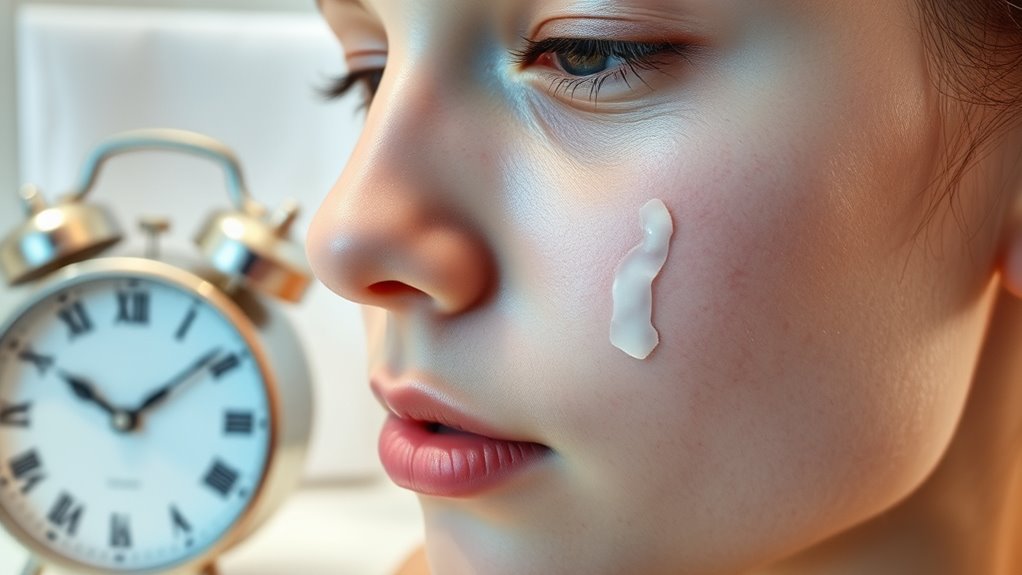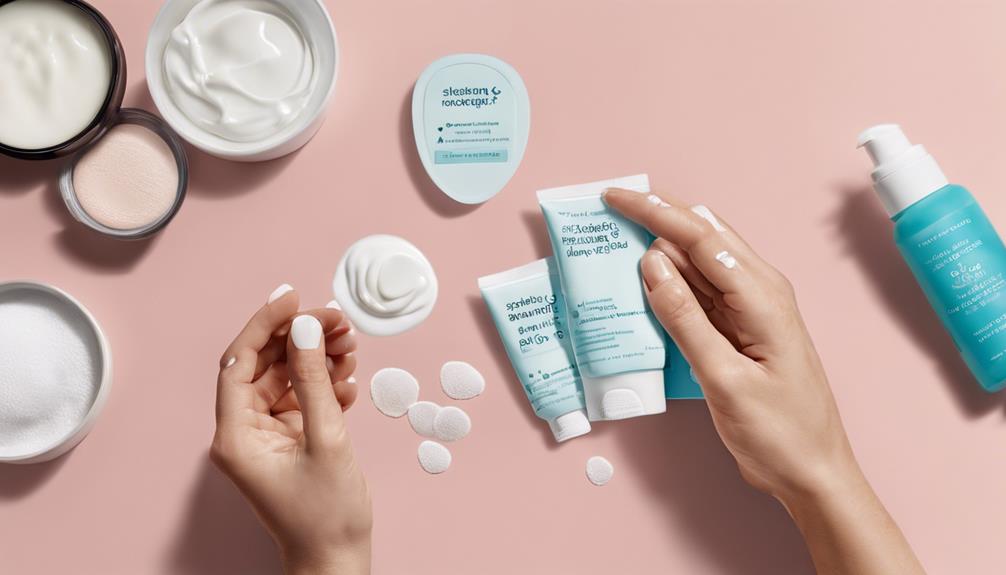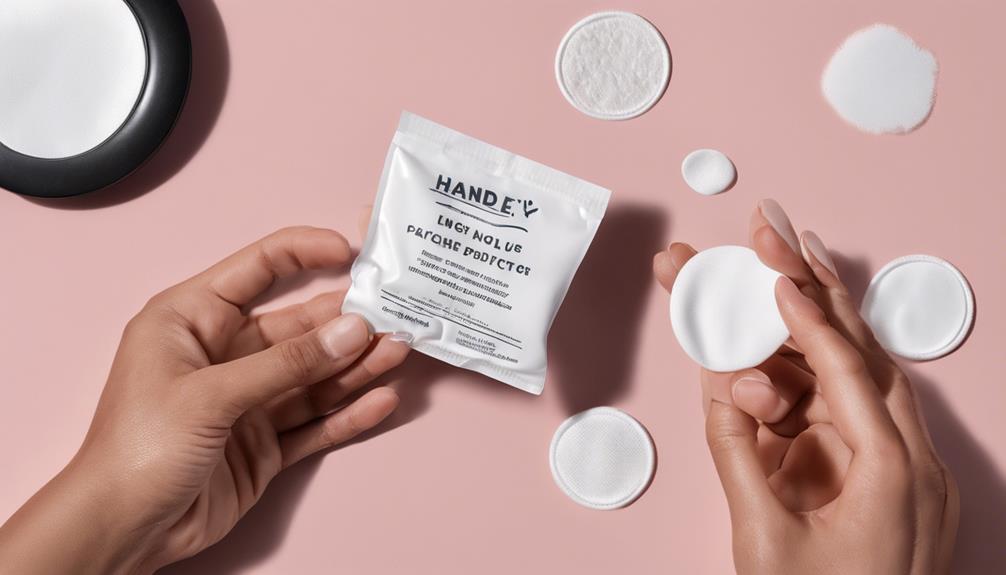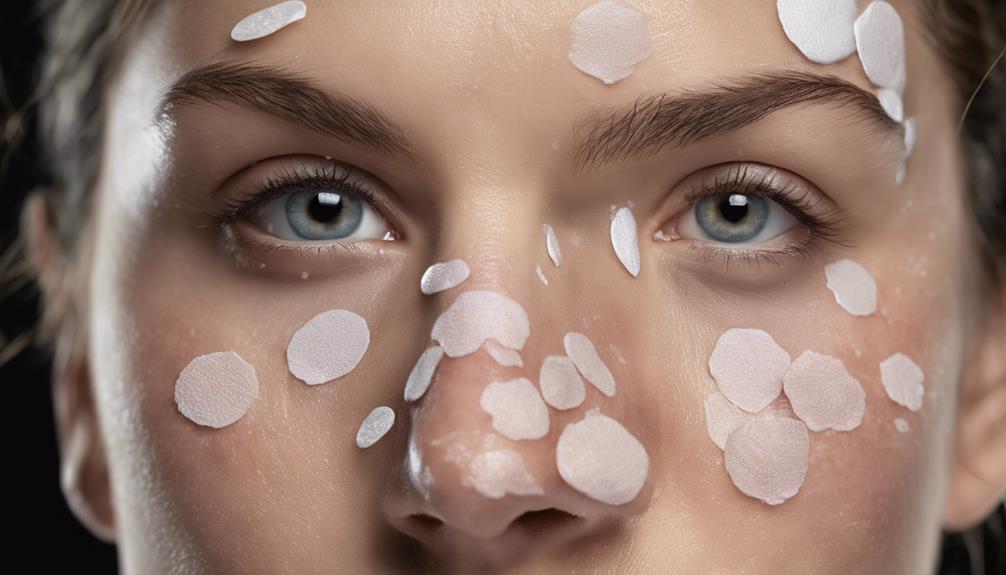To effectively tackle blemishes, you should leave a pimple patch on for at least 6 to 8 hours. If you’re dealing with stubborn spots, extending the wear time to 24 hours can be even more beneficial. You’ll notice visible results in just 4 to 6 hours, but be sure to remove the patch when it turns opaque. Curious about how to maximize their effectiveness and understand the benefits? There’s plenty more to explore!
Key Takeaways
- Pimple patches should be worn for at least 6 to 8 hours for optimal results, making overnight use ideal.
- Visible improvements can be seen in as little as 4 to 6 hours after application.
- For stubborn pimples, patches can be worn for up to 24 hours.
- Remove the patch when it turns opaque to ensure maximum effectiveness.
- Skin type and severity of the blemish may influence how long you should keep the patch on.
Understanding Pimple Patches and Their Functionality
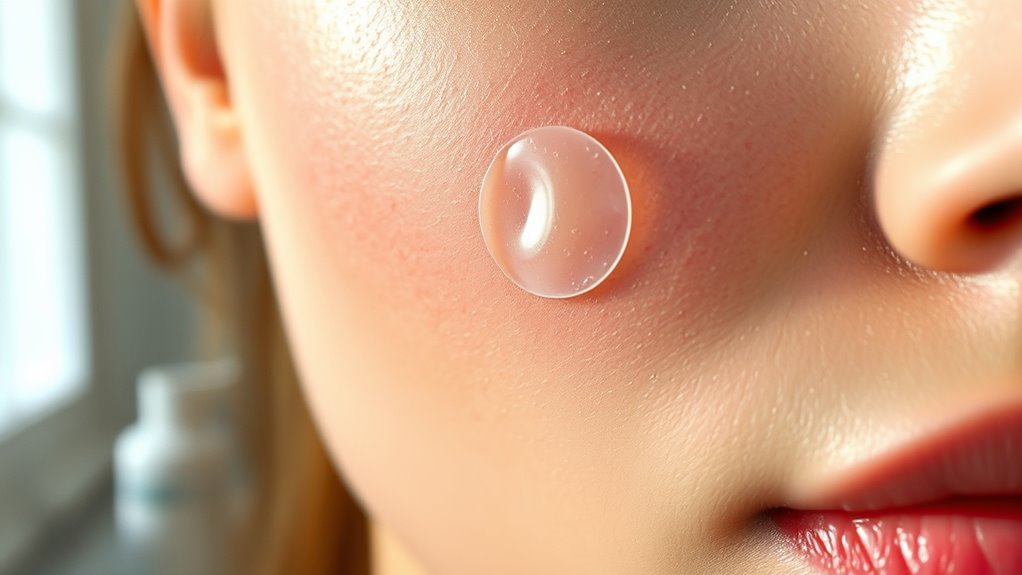
When you think about treating a pimple, pimple patches offer a practical solution that combines simplicity and effectiveness.
These patches, primarily made of hydrocolloid, absorb excess fluid and protect your skin. They function like wound dressings, creating a healing environment while preventing contamination. The breathable adhesive minimizes irritation and skin maceration, making them gentle on all skin types. Pimple patches are an essential addition to skin care routines for blemish management.
Many patches also contain ingredients like salicylic acid or hyaluronic acid to boost their effectiveness further. By acting as a barrier, pimple patches help reduce inflammation and promote faster healing, especially for mild to moderate acne.
They’re perfect for covering blemishes discreetly, reducing the urge to pick, and ultimately leading to healthier skin.
Recommended Duration for Maximum Effectiveness

Pimple patches are most effective when worn for a recommended duration of at least 6 to 8 hours. For best results, consider using them overnight, allowing the patch to stay on for about 8 to 12 hours. This overnight application not only offers convenience but also promotes uninterrupted healing. You may notice visible results in as little as 4 to 6 hours, particularly with some patches. If you’re dealing with stubborn pimples, you can wear the patch for up to 24 hours. Just remember to remove it when it turns opaque, indicating it has absorbed impurities. Following these guidelines guarantees maximum effectiveness, helping to reduce pimple size and redness while minimizing the risk of scarring. Additionally, these patches create a moist environment that speeds up healing and prevents scabs.
Factors That Impact How Long to Wear Pimple Patches

Several factors influence how long you should wear pimple patches for ideal results. The type of acne plays a significant role; whiteheads benefit from 6-8 hours, while early-stage pimples may need less. Hydrocolloid patches are especially effective for drawing out impurities and are designed to be worn for extended periods. Patch formulation matters too—hydrocolloid patches generally stay on longer, but those with active ingredients might require shorter durations to prevent irritation. Your skin type and sensitivity also affect wear time; oily skin may need frequent reapplication, while dry skin benefits from longer use. The severity of the blemish is important as larger, inflamed pimples often require extended wear. Finally, indicators like the patch turning opaque or losing adhesion signal when it’s time to remove or replace the patch for best results.
Benefits of Using Pimple Patches for Acne Treatment
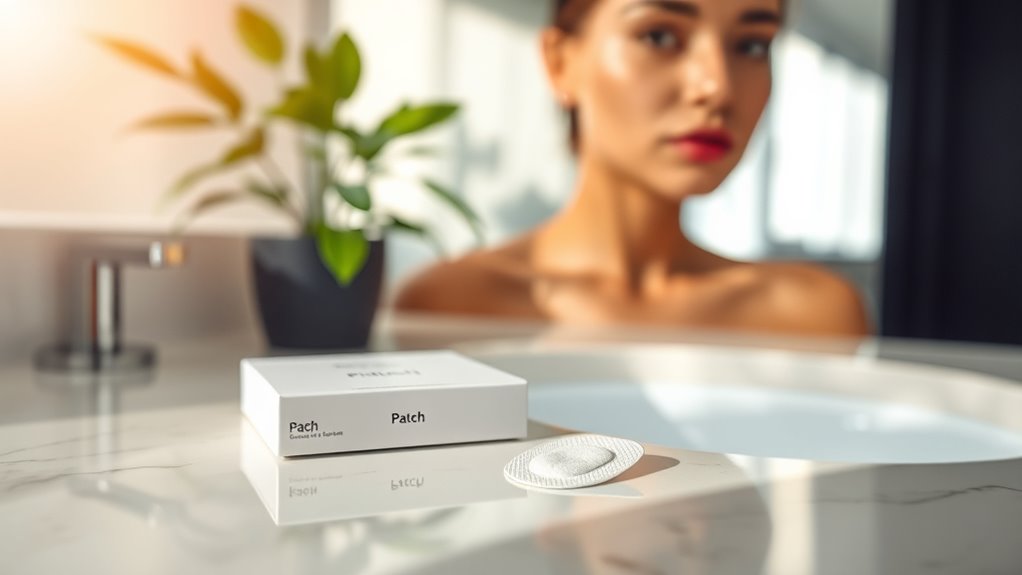
Using pimple patches can greatly enhance your acne treatment routine, especially since they offer a range of benefits.
They’re incredibly convenient, allowing for easy application on individual pimples without disturbing surrounding skin. Many patches are thin and transparent, making them discreet enough to wear during the day or overnight.
Additionally, they act as a protective barrier against irritants and bacteria, promoting a healing environment. Patches deliver active ingredients directly to the pimple, targeting treatment where it’s needed most, and help reduce irritation by preventing you from picking at blemishes. Furthermore, they are designed to absorb excess oil and create a protective barrier, which aids in the overall effectiveness of treatment.
With their hydrocolloid material, they absorb excess oil while retaining moisture, speeding up the healing process and reducing redness.
Common Misconceptions Surrounding Pimple Patch Usage
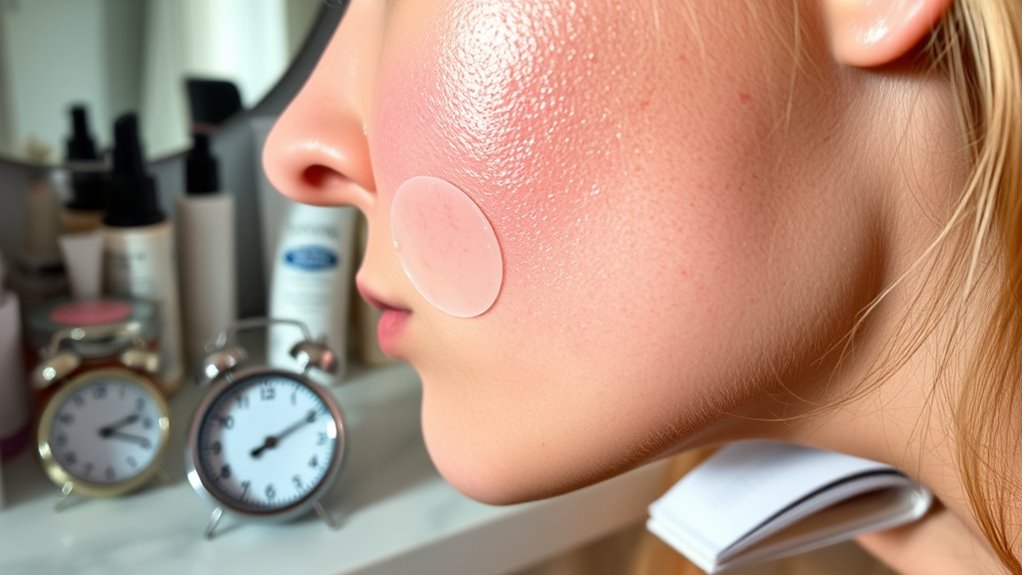
While pimple patches are a popular choice for acne treatment, many misconceptions can lead to improper use and expectations. One common mistake is applying patches on unclean skin. Always make sure your face is clean and dry to maximize effectiveness. Pimple patches must be applied to clean, dry skin to ensure effective absorption.
You should also apply patches after cleansing but before any other skincare products; otherwise, they mightn’t stick well.
Another misconception is how long to wear them. For the best results, leave patches on for at least 6 hours and remove them once they turn opaque.
Additionally, remember that pimple patches work best on surface-level whiteheads, not deep cysts. Overrelying on them can delay seeking professional help for persistent acne, so use them wisely!
Frequently Asked Questions
Can I Use Makeup Over My Pimple Patch?
Yes, you can use makeup over your pimple patch!
Just make sure your skin’s clean and dry before applying the patch for better adhesion.
Opt for lighter, oil-free products, and apply them gently to avoid moving the patch. A matte finish concealer works best to blend with your skin.
This way, you can reduce the patch’s visibility while protecting your pores from heavy makeup.
Just remember not to layer too much!
How Do I Know if the Patch Is Working?
You’ll know the pimple patch is working when it changes color, turning white or cloudy as it absorbs impurities.
You might also notice the pimple’s size reducing, along with less redness and swelling.
By covering the blemish, the patch prevents you from picking, which can lead to irritation.
Over time, you’ll see an overall improvement in your skin’s appearance, making those pesky pimples less visible.
Keep an eye out for these signs!
Are There Any Side Effects of Using Pimple Patches?
Imagine you’ve just treated a stubborn pimple with a patch, but later notice redness and irritation around it. That’s one common side effect of using pimple patches.
You might also experience dryness, peeling, or even an allergic reaction if you’re sensitive to certain materials.
Prolonged use can lead to blisters or worsen acne by trapping bacteria.
Always test patches first and limit wear time to avoid these issues while ensuring effectiveness.
Can I Reuse Pimple Patches?
You can’t reuse pimple patches. Once you’ve used a patch, it’s filled with oil and pus, which can lead to infections if reapplied.
They’re made for single use, ensuring your skin stays safe and clean. Instead of trying to reuse them, opt for a fresh patch when you need one.
Proper disposal is key, too, so toss used patches in non-recyclable waste to minimize environmental impact.
Keep your skin healthy!
What Should I Do if the Patch Falls Off?
If your pimple patch decides to pull a Houdini and falls off, don’t panic!
First, check if your skin’s still clean and dry. If it is, you can apply a new patch. Just make sure your hands are clean to avoid transferring any bacteria.
If the first patch got saturated and started peeling, replacing it’s key. Always aim to keep your skin prepped for the best results.
Happy patching!
Conclusion
In the battle against breakouts, pimple patches can be your secret weapon. By wearing them for the recommended duration—usually six to eight hours—you’ll maximize their effectiveness and let them work their magic. Remember, factors like the size of your pimple and skin type can influence how long you should keep them on. So, treat your skin like a canvas, and let these patches paint over imperfections, revealing a clearer masterpiece in no time!
